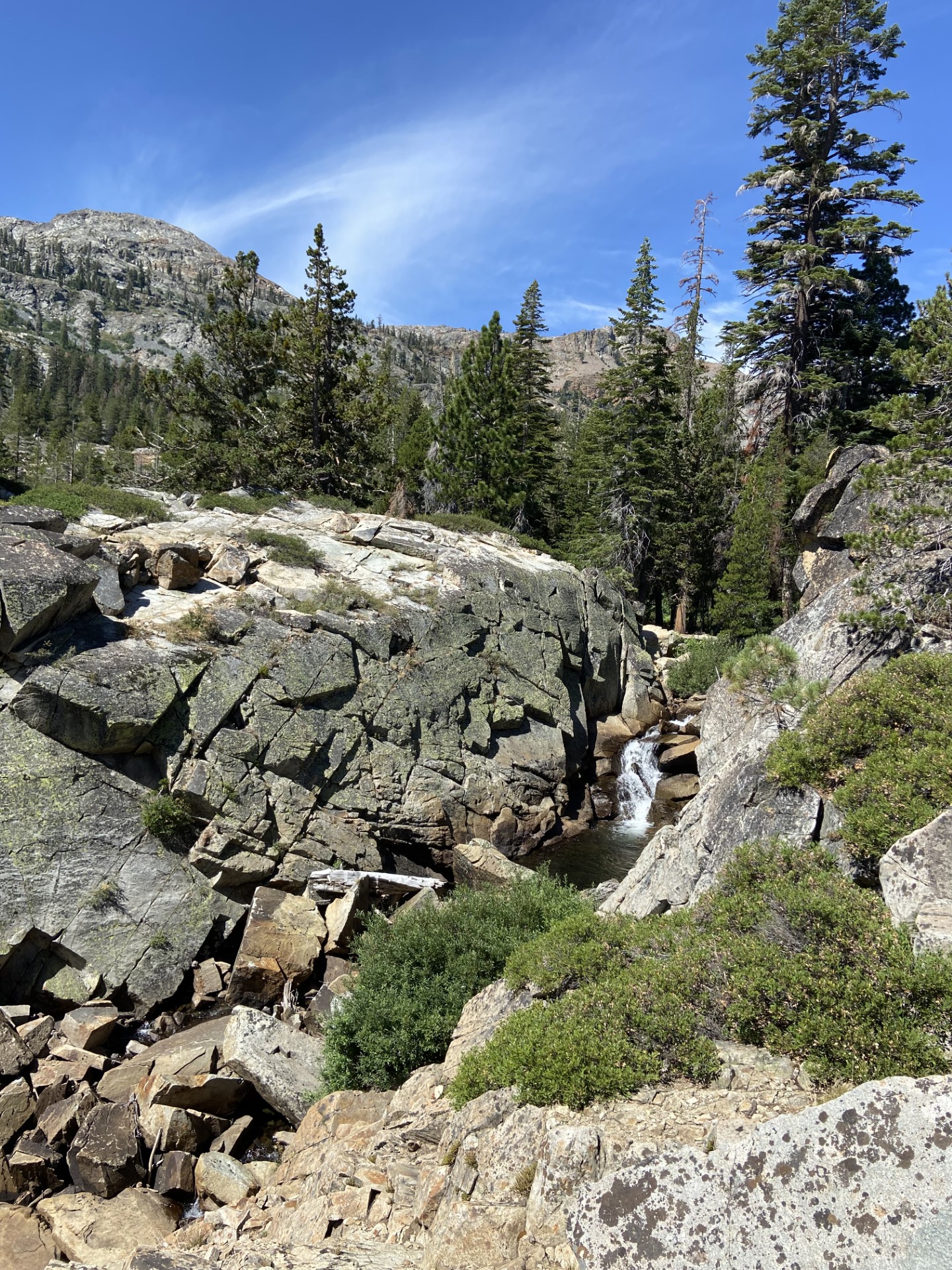Now that I am well settled in my forest and becoming more experienced with the botanical landscape of the region, my co-intern and I have begun conducting more in-depth scouting of target species for seed collection. Although I get nervous hearing that interns at other forests have already been collecting seed, LTBMU seems to be unique in that a lot of its native plants will begin seeding within the next month or two.
One species that I have been seeing a lot is Anderson’s thistle (Cirsium vulgare). This Asteraceae member has bright pink flowers and is mildly spiny. It also grows from one to a few stems, whereas the invasive bull thistle (Cirsium vulgaris) is generally much more highly branched. The majority of the populations I have seen are in the process of flowering, with only a few individuals in each beginning to seed. Interestingly, some of the largest populations I have visited are growing in an area burned by the Caldore Fire in 2021, which was among the largest known in California.
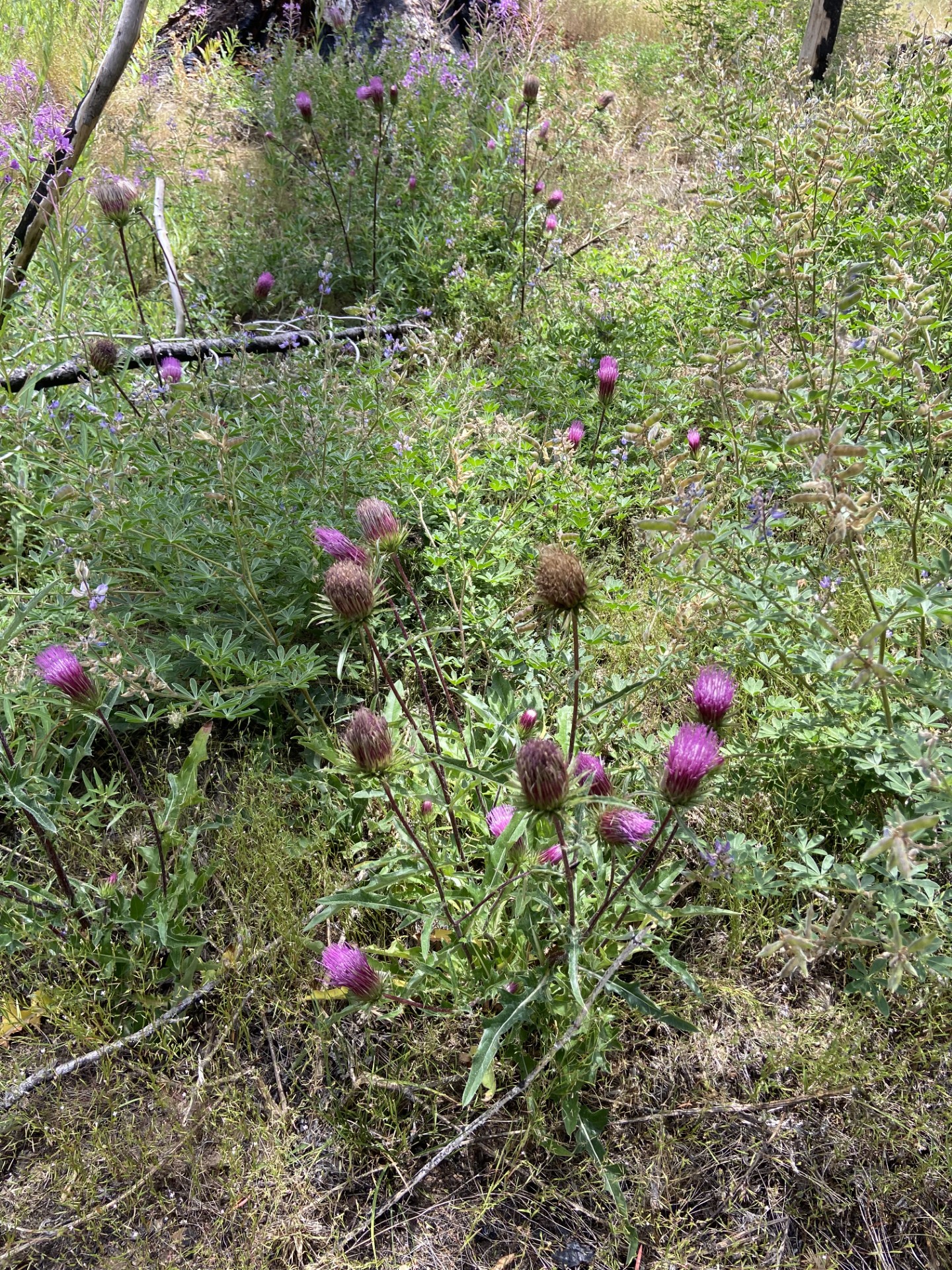
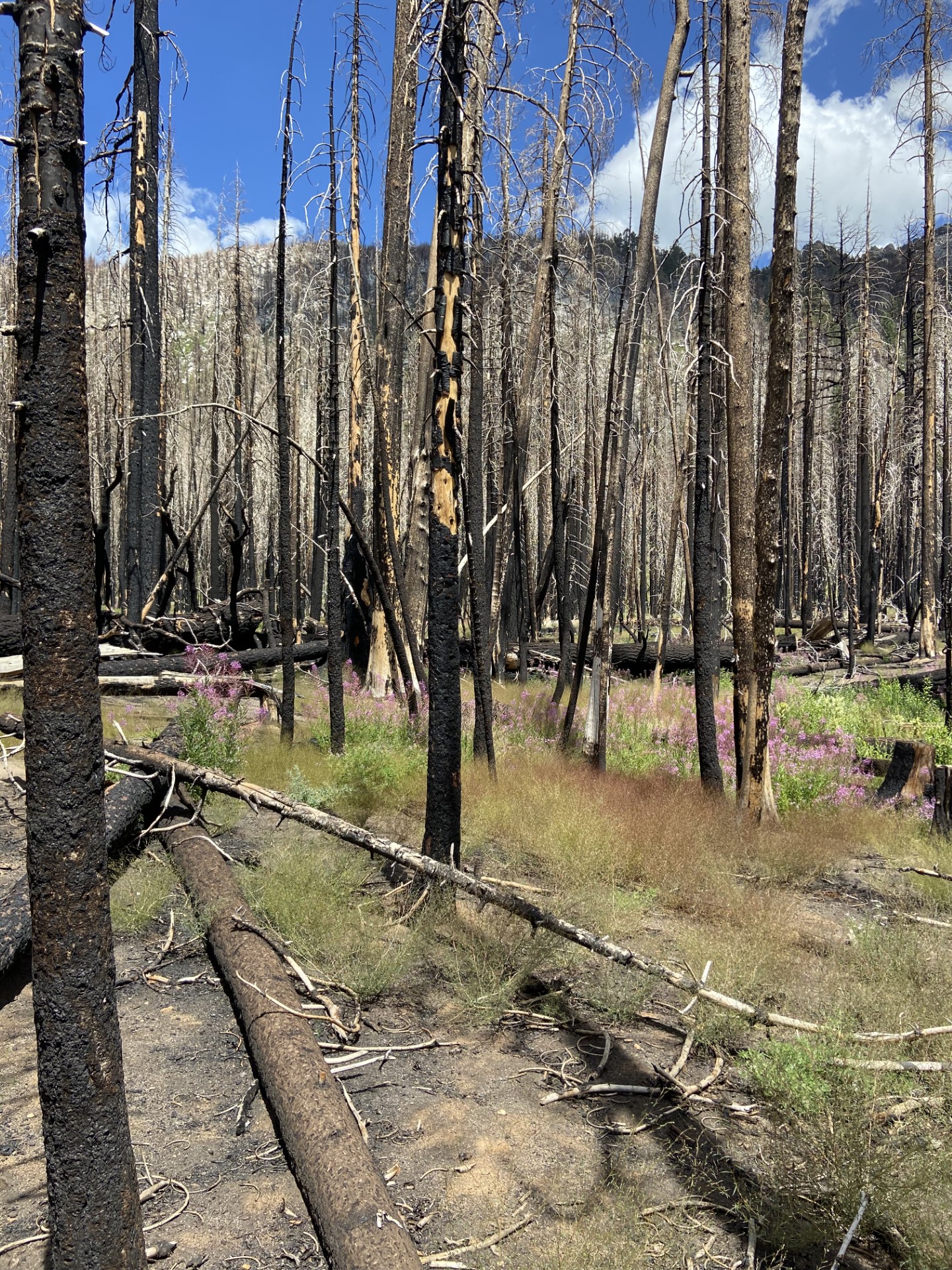
A target species that has become one of my favorites is Eriogonum wrightii. This low growing, silver-leafed member of the family Polygonaceae likes dry and rocky areas. Its small white flowers and small, matting habit make it, in my opinion, a very adorable plant.
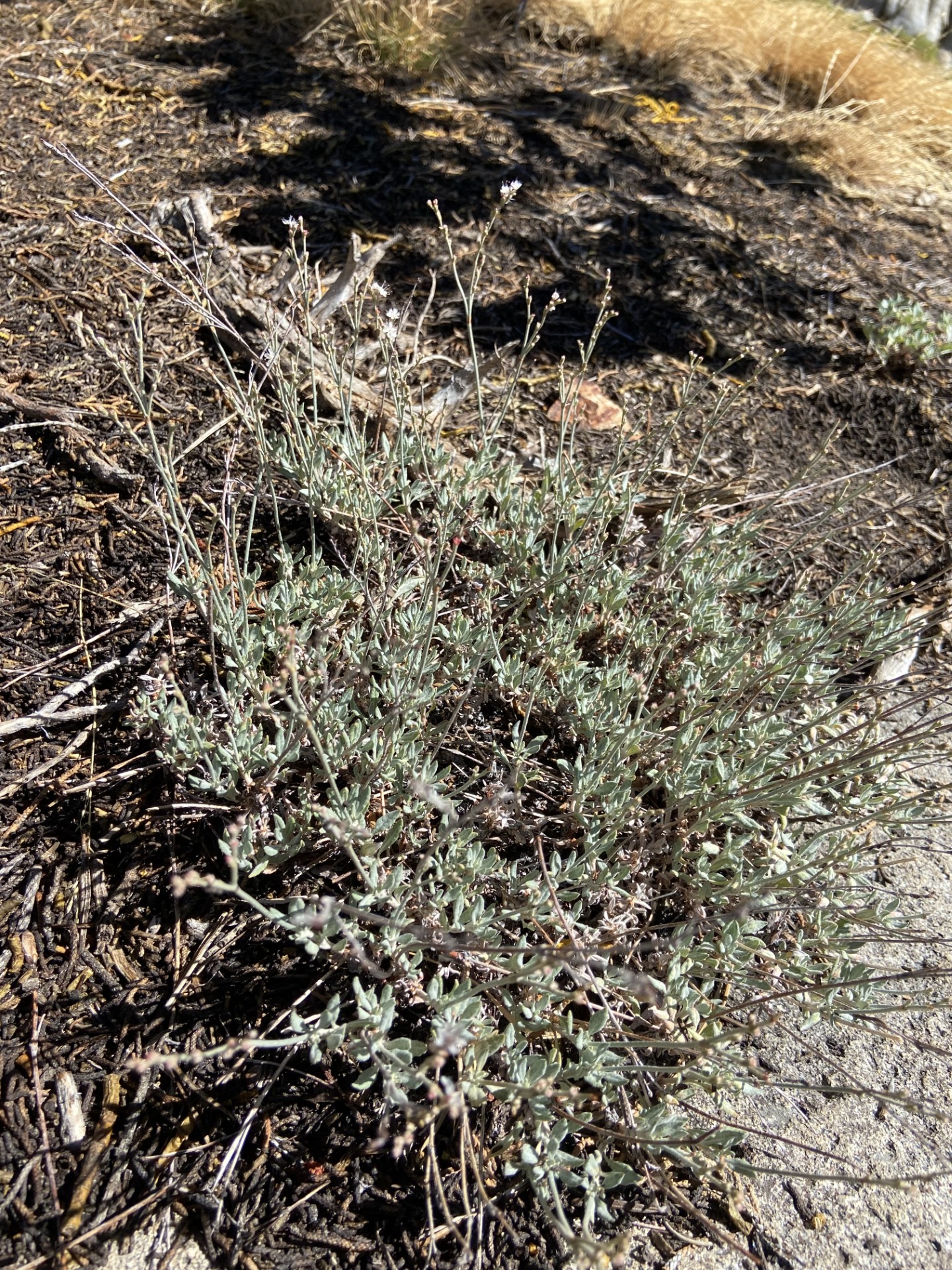
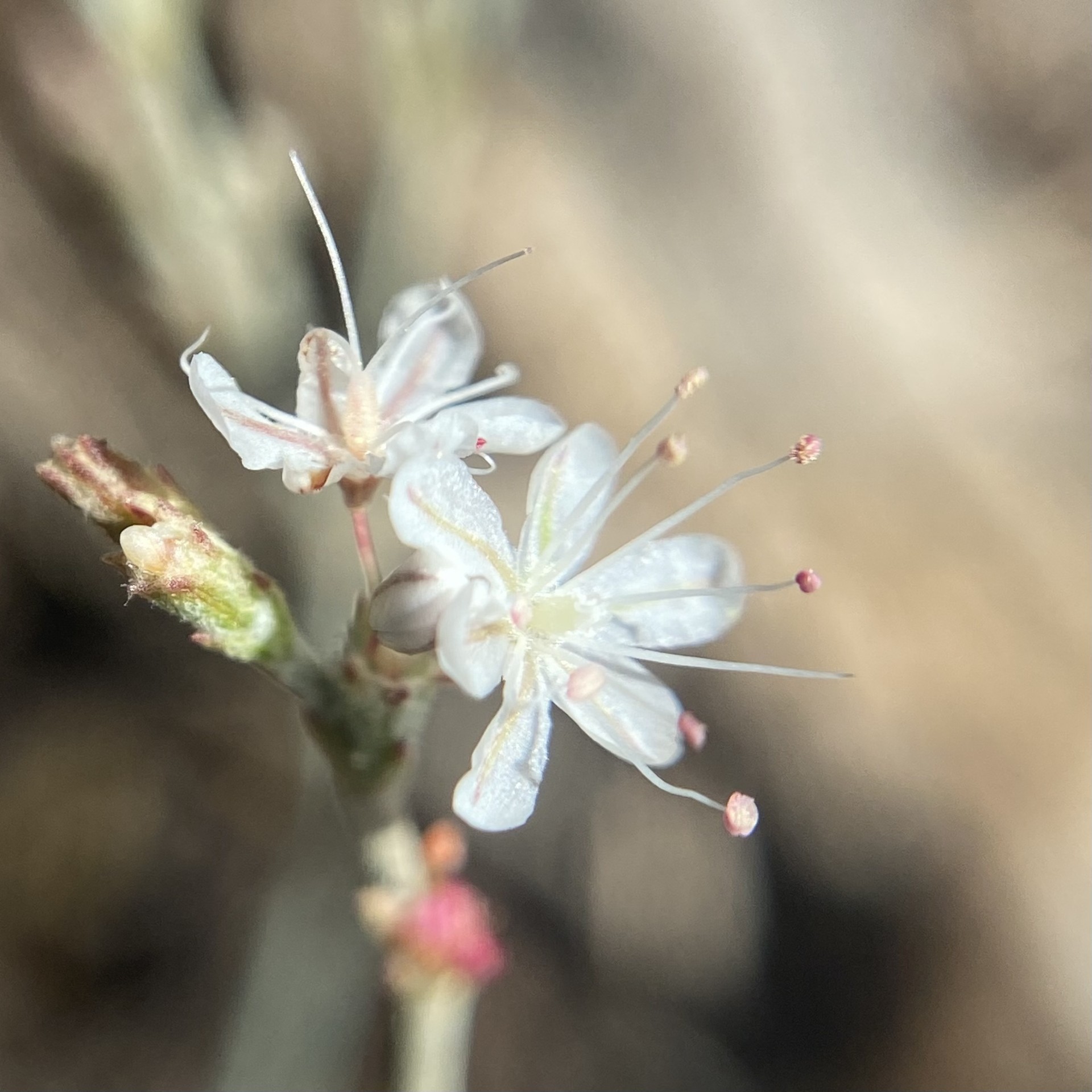
Other collection plants we have scouted include squirreltail (Elymus elymoides), spreading dogbane (Apocynum androsaemifolium), Brewer’s lupine (Lupinus breweri), and heart-leaf milkweed (Ascelpias cordifolia, which showed signs of possible monarch butterfly herbivory). Besides that, I have been enjoying the amazing views whenever I get the chance.
